2024 IMPACT REPORT







To strengthen our communities and our democracy through local journalism that is truthful, fearless, fair and smart.
Report for America has established itself as a leading solution for revitalizing local media since our founding in 2017. We’re attacking the local news crisis in these unique ways:
We help communities close coverage gaps now. We’ve recruited, placed and supported more than 600 early career reporters in local newsrooms in all 50 states, Puerto Rico and Guam — yielding more than 80,000 stories. No other organization plays this role at our scale.
We’re the biggest bridge to sustainable local newsrooms of tomorrow, helping newsrooms of all sizes and types. Report for America has worked with nearly 400 newsrooms, helping them raise nearly $30 million in local donations and investing $30 million in direct salary subsidy, training and other support.
We’re one of the nation’s largest pipelines for journalists of color. Nearly half of our corps members identify as journalists of color. We’re helping newsrooms become more representative of the communities they’re trying to better serve, as they reach new audiences with new stories and build community trust.
Local newsrooms and journalists apply to us in a highly competitive process. We select newsrooms that, with our help, can become innovators of the industry. We match them with talented journalists and pay part of their salary for up to three years. We believe journalism is a public service and call these journalists “corps members,” in the spirit of the nation’s best service corps.
COVER: Report for America corps members at a group gathering in Chicago. Meaghan McElroy for Report for America


As we work to stem the local news crisis, Report for America and our host newsrooms and corps members have had notable successes this year:
• Corps members — some 250 this service year — produced excellent local journalism that changed laws and policies, held public officials accountable, and informed audiences about undercovered topics and communities. We highlight corps members and their impactful work in this report.
• Report for America’s impact in communities doesn’t end when corps members graduate from the program. Newsrooms report that corps members have sparked long-term rewards of improved community trust with their organization.
• Our host newsrooms grew more financially sustainable. We helped our 200 newsrooms raise $7.4 million in donations, and we paid an additional $3.5 million in direct subsidy for corps salaries.
• Strong editorial partnerships with the University of Missouri, The Associated Press, Investigative Editing Corps and CatchLight amplified and deepened corps members’ work and are a successful model as we continue to grow.
• We expanded our support for newsrooms and corps members — adding, for example, training in artificial intelligence tools — to help them incorporate new skills and work practices as they build newsrooms of the future.
We couldn’t have done this work, or the work we hope to do in future years, without the support of friends like you. So thank you for your commitment to Report for America. It means the world to us.
Sincerely,
Kim Kleman Executive Director
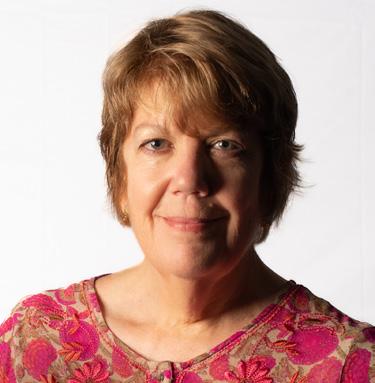
This year, Report for America fielded 248 corps members in 198 newsrooms across the country. Cumulatively, more than 600 corps members have reported for work in close to 400 newsrooms — in every state, Washington, D.C., Guam and Puerto Rico.
Current location (2023-2024)
Previous location

A father and son in Central New York enjoy apple picking, a major attraction each autumn for locals and tourists. Emily Kenny for Spectrum News 1
OUR YEAR AT A GLANCE

248 Corps members
198 Newsroom partners
19,255 Stories produced $7.4 million Newsroom donations we helped raise $3.5 million RFA corps salary support
2,784 Students served in corps-led community service projects

Corps members cover underreported issues and neighborhoods, strengthening communities and building trust. Their community service projects, involving youth media, inspire future generations of journalists.
Corps stories hold public officials accountable, cover community problems and solutions, and introduce audiences to their neighbors — all of which has driven positive change.


Rose, who covers public health, discovered a problem that was all but unnoticed by officials in the oldest state in the nation — the glaring number of violations of abuse and neglect against the elderly in residential care facilities. Her yearlong investigative series, produced with ProPublica, has informed Maine legislators as they work to close loopholes in laws exposed by the series. Rose graduated from the corps this year and was hired by her newsroom.
Rose has developed a beat on aging in Maine that is unmatched by any other newsroom. With her on board, The Monitor has been able to report on issues that would likely otherwise have gone unreported,” says editor-in-chief and former Report for America corps member Kate Cough.

Newsrooms often seek multilingual corps members to connect with communities. More than a quarter of corps members are fluent in Spanish, key for newsrooms trying to better serve Latino communities and for our bilingual and Spanish-language host newsrooms.
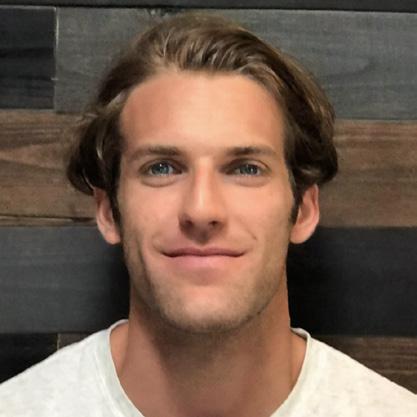
Atlanta, Georgia

Lautaro Grinspan has covered immigration issues for three years, his newsroom’s first full-time reporter on the beat. Originally from Argentina, Lautaro translates his work to Spanish for the publication. Lautaro continues at the Journal-Constitution after having graduated from Report for America this year.

He has used his language and reporting skills to educate our readers on immigrants who live in their communities and the challenges they face,” says his editor Laura Weaver. “His persistence and patience gives us a glimpse into their daily lives.”
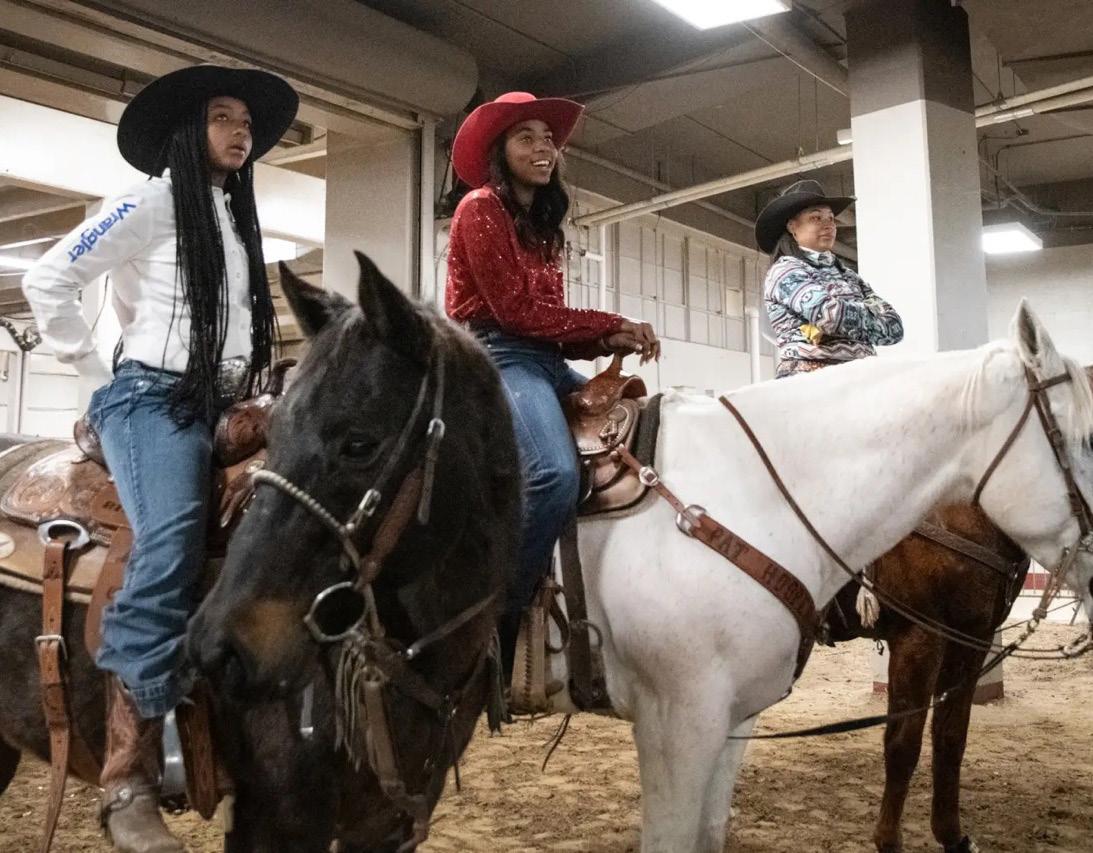

This year’s corps includes 45% journalists of color and 66% women. The corps ranges in age from 22 to 62 with a median age of 26.
55% White
23% Hispanic or Latino/a/x
14% Black or African American
9% Asian American or Pacific Islander
3% Middle Eastern or North African
2% Indigenous or Native American
Totals include corps members who noted several categories; almost 10% of the corps are multiracial.

All corps members lead community service projects that equip young people with media literacy skills, inspiring a new generation of journalists. Here’s what our corps contributed this year:
8,245
Hours volunteered
2,784
Students served 70% Rural, low-income or students of color

Since joining Report for America, Breanna Reeves has dedicated herself to empowering middle school girls through storytelling with data mapping software. Breanna, a data journalist, teaches students at Ignite Leadership Academy, a 10-week leadership and STEM program for girls offered by the Society of Extraordinary Women. With Breanna’s guidance, students learn to create impactful digital maps and practice essential journalism skills. During her three years in our program, Breanna has mentored 48 students. After graduating from Report for America in 2024, she continues her work as a reporter and editor at Black Voice News.
109
Partner organizations
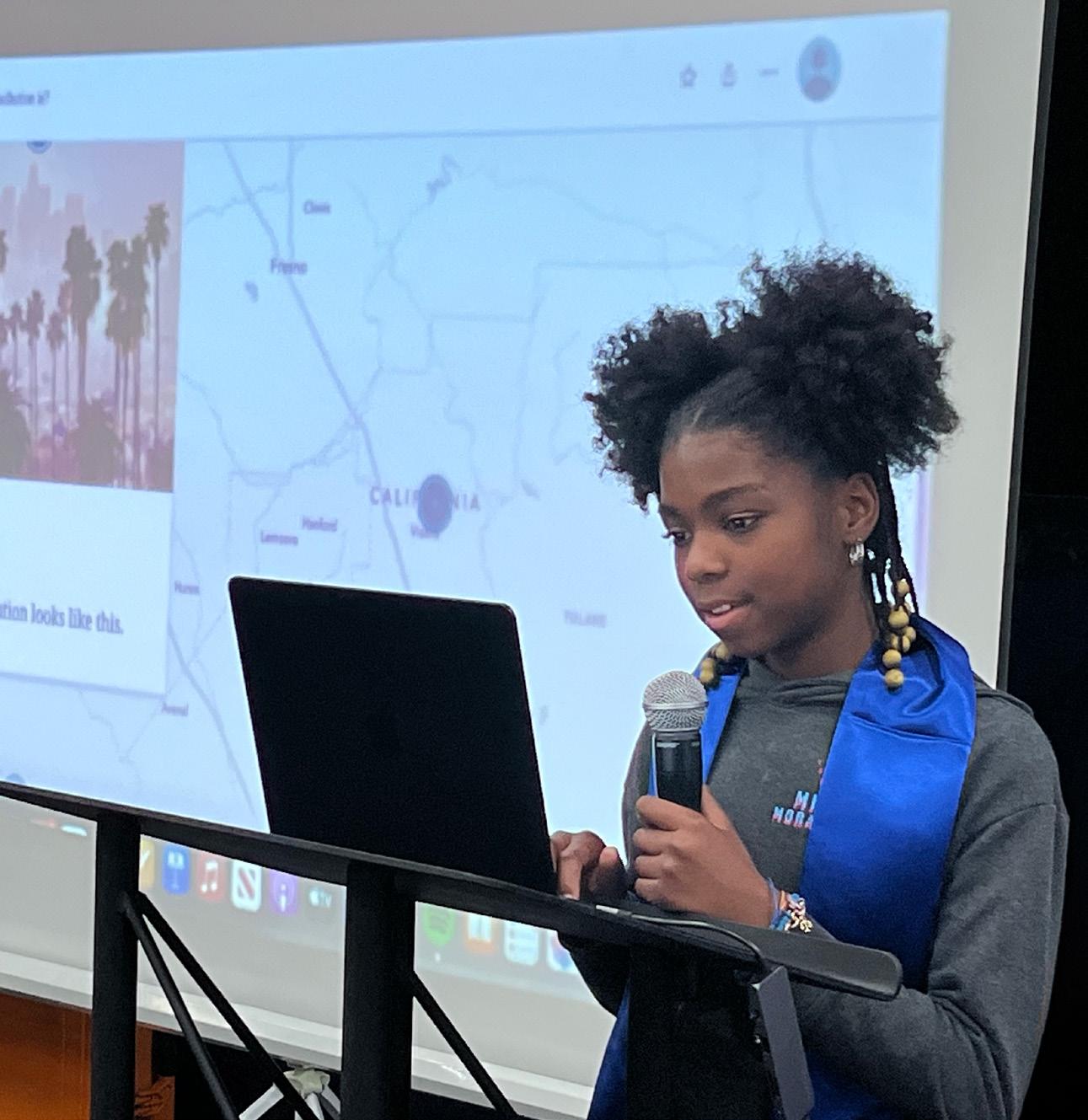
Corps member Rachel Hellman has helped her newsroom expand coverage of rural Vermonters, whose daily lives are often overlooked by the media.
Jeb Wallace-Brodeur for Seven Days

We help newsrooms grow and thrive by teaching them how to fundraise, recruiting talented journalists and subsidizing their salaries, and enabling them to do more great journalism with the support of their communities.
Report for America is dedicated to supporting new business models that promote local philanthropy, among diversified revenue channels, as a necessary tool for a robust news ecosystem. We require newsrooms to fundraise to help pay for their corps member’s salary, including donations from individuals, major donors, foundations and corporations. 73

Corps member Jake Shore interviews a community member. Courtesy of The Current
We support editors in our host newsrooms with training on some of the most pertinent issues in journalism today. This year’s training program included artificial intelligence tools, managing mental health in the newsroom and how to build a more inclusive newsroom. Sessions on topics like these and more give newsrooms the tools to navigate an ever-changing industry.
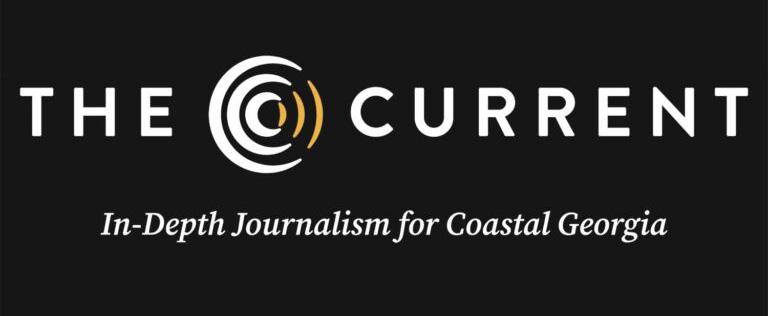
The Current is a nonprofit digital newsroom, providing in-depth journalism for Coastal Georgia. They host corps member Jake Shore and welcome Jabari Gibbs this summer. They’ve created support among diverse funders; donations have already fully funded the newsroom’s portion of Jake’s and Jabari’s salaries. Jake’s excellent accountability journalism has already driven community engagement.
I’m so grateful you’re attempting some transparency in this county,” one donor shared. “I’m making monthly donations to The Current now.”

Richland Source, a for-profit digital newsroom serving North Central Ohio, has cultivated major donors including institutional funders, kept donors involved, and built long-term support. Report for America is the newsroom’s fiscal sponsor — a free service we offer all of our for-profit host newsrooms so they can accept donations. They’ve secured funding for a good portion of their corps members Grant Richey and Mariah Thomas (at sister publication Ashland Source) for the coming year.
Our partnerships with organizations, universities and others expand our impact and benefit newsrooms, journalists — and most of all, communities.

To bolster coverage of state governments where support is needed most, Report for America partnered with The Associated Press to field more than 30 reporters to date in AP statehouse bureaus throughout the country. Seven more reporters join the initiative this year.

To encourage more investigative reporting in local newsrooms and to help local reporters and editors hone those skills, Report for America partners with the Investigative Editing Corps. This two-year partnership has produced eight projects to date. “This collaboration is all about helping local news organizations produce stories that matter to their communities,” says Rose Ciotta, founder of Investigative Editing Corps.

The Ag & Water Desk is a collaboration between the Missouri School of Journalism, the Society of Environmental Journalists and Report for America to enhance the quantity, quality and impact of journalism on agriculture, water and related issues in the Mississippi River Basin. Over the past two years, we’ve hosted 11 journalists in 10 newsrooms. Our corps members produce hundreds of stories, including collaborative and investigative pieces such as the five-part multimedia series “When it Rains.” The Desk’s coverage is featured in local and national news outlets across the country.
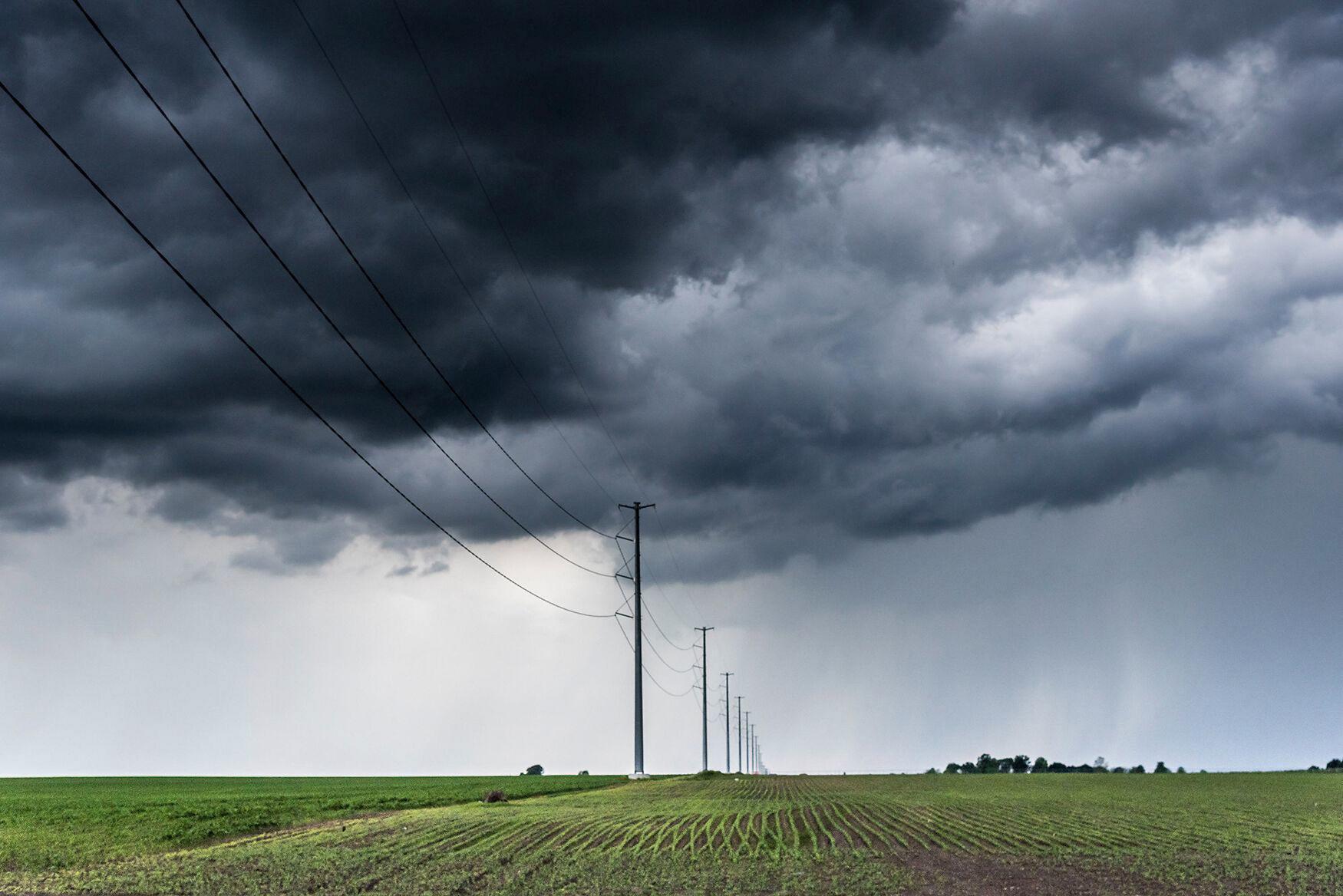



Report for America has partnered with CatchLight, a nonprofit visual media organization, to support five photojournalists in our California host newsrooms. Newsroom partners gain access to CatchLight’s statewide visual desk, which helps build their capacity for great local photography. Corps members receive mentorship and the opportunity to deeply connect with their communities.
As our newsroom’s first full-time photographer, Pablo has elevated the reach and ambition of our work. His thoughtful and empathetic photographs resonate deeply with the Latinx communities we serve, and have been critical to helping our bilingual coverage stand out across print and digital platforms. We are incredibly grateful,” Erika Beatriz Carlos, editor at El Tecolote, says of corps member and CatchLight fellow Pablo Unzueta.




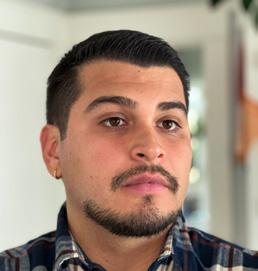
El Tecolote.

We support the next generation of journalists with world-class training, mentorship and networks, preparing them for a future in journalism.
Report for America provides a robust, multi-layered support system for our corps members, many of whom are earlycareer journalists. Our all-around support system ensures that they are well-equipped to make a lasting impact in their communities and continue their careers.
Our six regional managers, deeply experienced and award-winning journalists, are assigned to support every corps member and parter newsroom. They provide one-on-one guidance, helping corps members navigate challenges and make the most of their experiences.
Report for America offers extensive online workshops to help journalists excel on their beats, sharpen their skills and navigate newsroom dynamics. We collaborate with top journalists and organizations to offer training sessions tailored to corps members’ needs. This year’s 56 workshops included sessions on building trust, public records and safety in the field. First-year corps members receive training on building their beats, while those in their final year benefit from the “Your Next Chapter” series, preparing them for future journalism careers.
Many corps members are paired with mentors, veteran journalists from a variety of media backgrounds. This year, 135 mentors supported our corps members, offering advice, encouragement and sometimes just a listening ear. “My RFA mentor has been a wonderful support system!” says Gabriela Szymanowska, corps member at the Sarasota Herald-Tribune. “I’m grateful to have someone experienced to turn to for advice on overcoming challenges.”
The best part about RFA is the range of online workshops available to help support journalists on their beats, manage newsroom dynamics, and advocate for themselves.
Also, I think the constant checkups by regional managers are helpful. It’s nice to know there are people outside of your newsroom with whom you can share your concerns or achievements.”
— Elvis Menayese, WFAE 90.7 FM
The talent that Report for America corps members contribute to newsrooms has long-lasting benefits. Our extensive recruiting network helps us match journalists from across the country with newsrooms that need their particular skills. Debuting a beat with a highly skilled journalist has allowed our partners to demonstrate the value of their coverage and secure funding to keep it going for years.

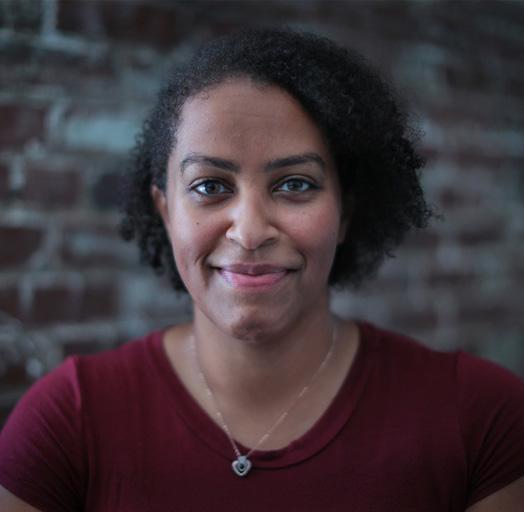

Laura, a veteran journalist with more than a decade of experience, created and pitched her own beat to the Institute. Her reporting examines unsolved racially motivated murders from the modern civil rights era in Memphis and across Tennessee, to increase public understanding of how these crimes affect communities today. She is the coordinator of the Institute’s “Civil Wrongs” podcast, now in its third season.
Laura is well respected in the journalism community and the community at large. She brings an extra layer of credibility to our organization,” says institute director Marc Perrusquia.


Jarrette is a multimedia journalist covering Indigenous communities in the Pacific Northwest. Originally from Montana, he is a member of the Aaniiih and Nakoda tribes of the Fort Belknap Indian Community. Jarrette was one of the first full-time reporters at Underscore, which was founded in 2019 to fill essential gaps in coverage of Native communities. His dedication to the people and cultures of the region shines in his work, the newsroom says.
This is classic Jarrette reporting: in depth, community oriented storytelling that illuminates an important issue by vividly portraying the people involved,” says Karina Brown, managing editor. “His storytelling is catapulted by his beautiful photography.”

Indigenous artist Zahn-Nahtzu points out medicinal native plants at Thacker Pass in Northern Nevada, where lithium mining has sparked protests over the past several years.
Jarrette Werk for Underscore Native News
This year, 111 corps members graduated from the Report for America program, including 40 permanently hired by their host newsrooms. They will join a thriving alumni network building on the journalism careers that gained momentum through Report for America.

Eric J. Shelton 2020 graduate Health Photojournalist, Mississippi Today

Phoebe Petrovic
2022 graduate Investigative Reporter, Wisconsin Watch

Eleni Avendaño 2021 graduate Managing Editor, HIKI NŌ, PBS Hawai’i

Frank Vaisvilas 2023 graduate Indigenous Affairs Reporter, Milwaukee Journal Sentinel

Monique John 2022 graduate Reporter, ABC11 WTVD-TV Fayetteville, NC

Julia Shanahan 2024 graduate Editor-in-Chief, Rappahannock (VA) News & Foothills Forum
OUR ALUMNI STAY IN JOURNALISM
82% of program alumni continue working in journalism.
36% of this year’s graduates were hired by their host newsrooms.
Report for America has allowed my career to advance in ways I never imagined and I will be forever thankful to the program for that.”
— Claire Rush, 2024 graduate and reporter, The Associated Press Oregon
Corps member Dustin Bleizeffer of WyoFile helps release a golden eagle while researching a story about how wildlife biologists track the birds.
Courtesy of Dustin Bleizeffer

In the next five years, Report for America aims to:
Work with hundreds more “lighthouse” newsrooms. Lift the industry by adding more than 500 local news organizations to our program — potential ”beacon” newsrooms of all types that with our help can become even stronger, and inspire other newsrooms by their example. We want to create a ripple effect that strengthens the entire industry.
Grow our corps to shrink news holes. Continue to close big coverage gaps in communities by supporting up to 600 new corps members, doubling our cumulative number of positions to more than 1,250. This significant expansion will ensure that more communities, particularly those underserved or overlooked, have access to vital local news.
Help communities promote a culture of giving that supports local news. Fortify newsrooms’ financial stability by adding more than $60 million in local and national dollars into journalism ecosystems, for $100 million cumulatively. This effort will help sustain a robust, independent press that is essential for strong communities.
Enable deep coverage of local news. Deepen reporting of highdemand coverage issues, enhance newsroom collaborations and better target donor support by launching thematic corps cohorts around criminal justice, healthcare, the environment, and more.
Identify and promote great ideas. Widely share what’s working to replicate successes in impact and sustainability, using our extensive data and unique networks of hundreds of local newsrooms. We’ll foster a culture of innovation within the journalism industry toward our shared goals of informed, engaged communities and a resilient free press.
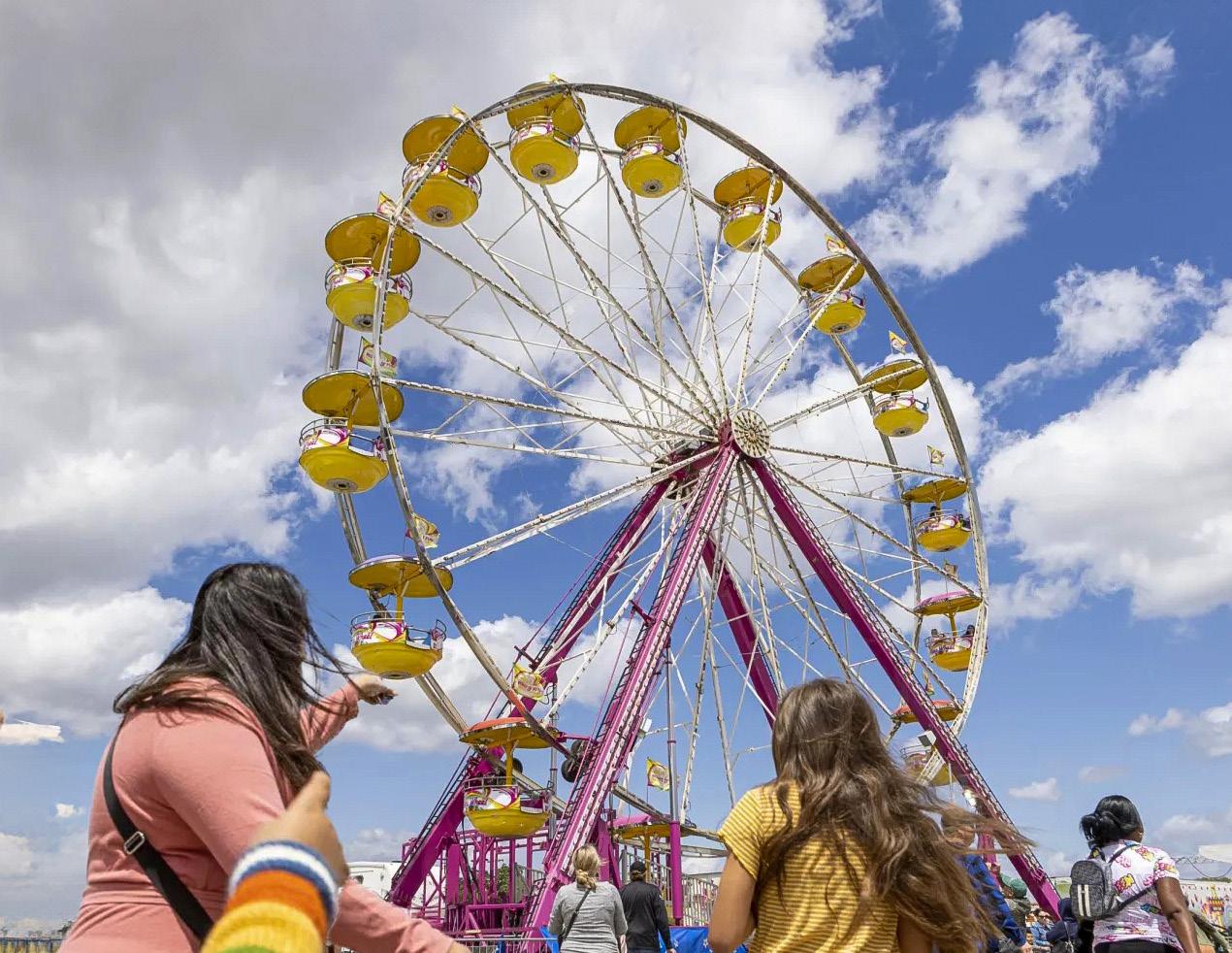
The Ferris wheel is a highlight at the annual Asparagus Festival in California’s San Joaquin county. The festival serves food including deep-fried asparagus and asparagus ice cream.
Harika Maddala for Bay City News/Catchlight Local
$250,000 - $2M
Anonymous
Bake Family Trust
Google News Initiative
Knight Foundation
Margaret A. Cargill Philanthropies
Posner Foundation
Robert Wood Johnson Foundation
The Hearthland Foundation
The Just Trust
Vere Initiatives
$50,000 - $249,999
Annie E. Casey Foundation
Anonymous (3)
Arthur Vining Davis Foundation
Commonwealth Fund
David Feinberg
Heising-Simons Foundation
Henry Kimelman Family Foundation
Jonathan Logan Family Foundation
Joyce Foundation
Kresge Foundation
Luce Foundation
Park Foundation
Public Welfare Foundation
Radiant Foundation
Richard H. Driehaus Foundation
Select Equity
Spring Point Partners
The Peter and Carmen Lucia Buck Foundation
Tow Foundation
University of Missouri School of Journalism and the Walton Family Foundation
W. K. Kellogg Foundation
Wyncote Foundation
$5,000-$49,999
Ann Vaughan
Anonymous (2)
Around The Table Foundation
Bingham Family Charitable Fund
CatchLight
Charlesbank Capital Partners
Dan and Christine Quinn Family
Foundation Donation
Ellen Tykeson
Jordan Meranus
Julia Maher
Kivel-Goldstein Family Fund
Lauren MacDonald
Linda Mason and Roger Brown
Richard Saltonstall Charitable Foundation
Rob and Jessica Zeaske
Rosabeth Moss Kanter
Scripps Family Fund for Education and the Arts
Sparkjoy Foundation
Strong Foundation of New York
Ted and Grace Anne Koppel
William Laitner
You Have Our Trust Fund
Report for America local newsroom
supporters ($10,000+)*
Anonymous (2)
Arnold Ventures
Ashland County Community Foundation
Bastian Foundation
Borealis Philanthropies
Central Indiana Community Foundation
Chicago Community Trust
Collaborative for Gender and Reproductive Equity
Collins Foundation
Communities Foundation of Texas
Community Foundation of the Texas
Hill Country
County of Boulder Resource
Conservation Division
Dallas Foundation
Democracy Fund
Emerson Collective
Ewing and Marion Kauffman Foundation
Ford Foundation
Gezellig Foundation
GHR Foundation
Grand Traverse Regional Community Foundation
Greater Green Bay Community Foundation
Grist Center for Rural Strategies
Health Forward Foundation
Healthcare Foundation of New Jersey
Heinz Endowments
Helen and Jabie Hardin Charitable Trust
Inasmuch Foundation
Inatai Foundation
Irvine Foundation
Island Foundation
Jane Kitchel McLaughlin and Peter McLaughlin
Jewish Heritage Fund
Johnson Family Foundation
Joyce Foundation
Kenai Mountains-Turnagain Arm
National Historic Heritage Area
Kirkpatrick Foundation
Lenfest Institute
Loud Hound Foundation
Lumpkin Family Foundation
MacArthur Foundation / Press Forward
Marx Family Foundation
Meadows Foundation
Melville Charitable Trust
Meyer Memorial Trust
Microsoft Foundation
Morris Roberts Local Journalism Foundation
Nebraska Public Media Foundation
New Jersey Civic Information Consortium
NewsMatch
North Valley Community Foundation
Northern Piedmont Community Foundation
Posner Foundation
Press Democrat Journalism Trust
ProPublica
Rathmann Foundation
Reva & David Logan Foundation
Robert Woodruff Foundation
Schumann Fund for New Jersey
Skyline Foundation
Stephen and Tabitha King Foundation
SunTrust
The Andrew W. Mellon Foundation
The Bernard and Audre Rapoport Foundation
The California Endowment
The Henry Luce Foundation
The Nature Conservancy
Thornburg Foundation
Trillium Family Foundation
Urban Child Institute
Vitalyst Health Foundation
W.K. Kellogg Foundation
Walton Family Foundation
Weingart
William Penn Foundation
WMU Foundation
Wyncote Foundation
Yakima Valley Community Foundation
To view a complete list of local newsroom supporters, visit www. reportforamerica.org/supporters.
*self-reported by Report for America newsrooms Become a donor!

